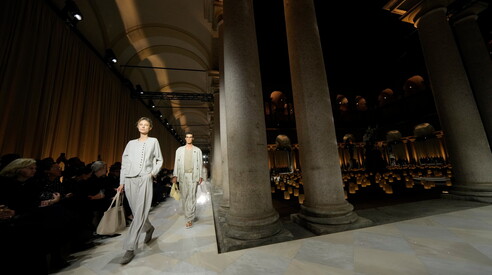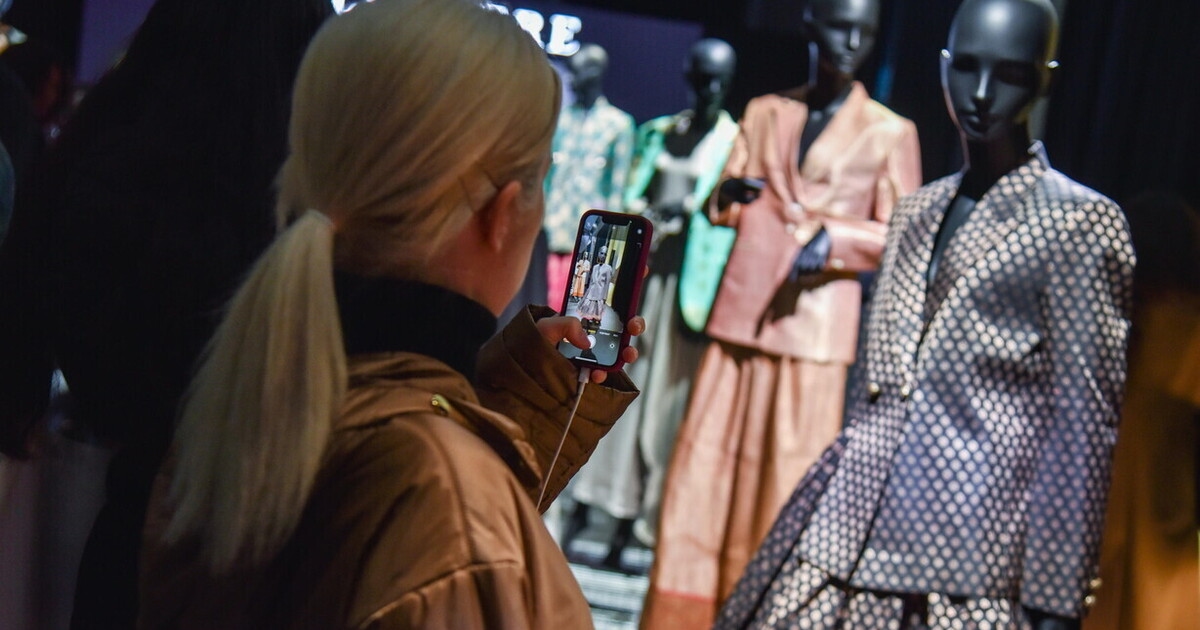The Trump Effect on Luxury That No One Would Have Expected


Photo LaPresse
The Fashion Sheet
Despite the tariffs, sales of European fashion brands in the United States have held up and, in many cases, have even increased.
The queues of girls in front of the Miu Miu stores in Milan, including the pop-up store dedicated to perfumes, and the peaks in views on social media recorded by Prada's GenZ brand (but in reality also very popular among Generation X and women in general, including criticisms of the aprons of the summer 2026 collection presented at the beginning of October in Paris), are among the signs of recovery in the sector after a first half of the year in decline due to economic and geopolitical uncertainties .
"Miu Miu is one of the few brands showing double-digit growth rates at a time when global uncertainty continues to dominate," explains Chiara Rotelli , senior equity analyst for the luxury goods sector at Mediobanca. In short, what was once considered the sleeping beauty, Miu Miu, has woken up, making a positive contribution to the financials of the entire group led by Andrea Guerra . And after a first half of the year in which all brands were affected by slowing demand , the third quarter saw a recovery thanks to a handful of high-end names. Prada is among them, along with Brunello Cucinelli and Hermès.
What made the difference? We need to look at how the global scenario is evolving: "The current earnings season," Rotelli continues, "shows some signs of improvement compared to the previous quarter, but we cannot call it a reversal of the trend. Brands with a strong exposure to high-spending consumers in North America are showing greater resilience, while those more exposed to aspirational consumers in both the East and the West are continuing to face headwinds." Yet, it was precisely American trade policy, first with the threat and then the imposition of heavy tariffs on European goods, that created instability in economic growth prospects for the whole of 2025. But, analysts point out, there is a substantial difference, which is also cultural in nature, between Chinese and American demand for European luxury goods. Chinese demand is influenced by the performance of the real estate sector, which is still slowing sharply despite government stimulus.
American demand , however, was supported more strongly than expected by the stock market. Wall Street, despite Trump's tariffs, continues to grow, and considering that a third of Americans' spending power depends on returns on stock investments, it's easy to understand why European brands' sales in the US have held up or even increased . Therefore, those who managed to intercept and ride the trend toward greater liquidity among the American middle class, certainly less inclined to save than their European counterparts, have achieved an improving third quarter. According to research by Intesa Sanpaolo, the latest results give the impression that "the worst is over and that the luxury sector crisis is finally easing." But it adds: "Our personal concern is that China may continue to act as a brake in the coming quarters, even if there have been encouraging improvements." Based on the data, Cucinelli, followed by Hermès and Prada, in second and third place respectively, led the ranking of revenue increases in the third quarter of this year. LVMH and Kering, eternal rivals, deserve a separate discussion. Bernard Arnault's group can be said to still be in a "floating" phase after the slowdown at the beginning of the year, although an overall analysis should take into account the group's high degree of diversification, which shows brands like Louis Vuitton making a strong recovery. Dior, meanwhile, is still experiencing a transition phase, partly due to changes in creative direction, from Maria Grazia Chiuri, recently appointed from Fendi, to Jonathan W. Anderson, who presented his first women's collection a month ago. The shift in direction within François Henri Pinault's group, following the handing over of the reins to Luca De Meo, will need to be evaluated.
The new CEO immediately focused on debt reduction with the sale of Creed to L'Oréal and on redefining some clauses regarding the acquisition of the Valentino stake, while also initiating a collaboration with the cosmetics giant to explore business opportunities with growing margins, specifically longevity . Another effect of the De Meo era is the redefinition of the role of Francesca Bellettini, previously the group's number two, as CEO and president of Gucci, with the aim of building a "leaner and clearer" organization and accelerating the brand's relaunch. At this stage, the individual company histories are intertwined with a market context that has provided some surprises. The unexpected dynamism of American demand is influencing the entire luxury sector, including yachts and cars.
The more manufacturers are exposed to Asian and Chinese markets, the lower their growth prospects, while the opposite is true for those selling to the US market, despite tariffs, whose impact on luxury goods seems negligible for now. It's the Trump effect no one expected.
More on these topics:
ilmanifesto





